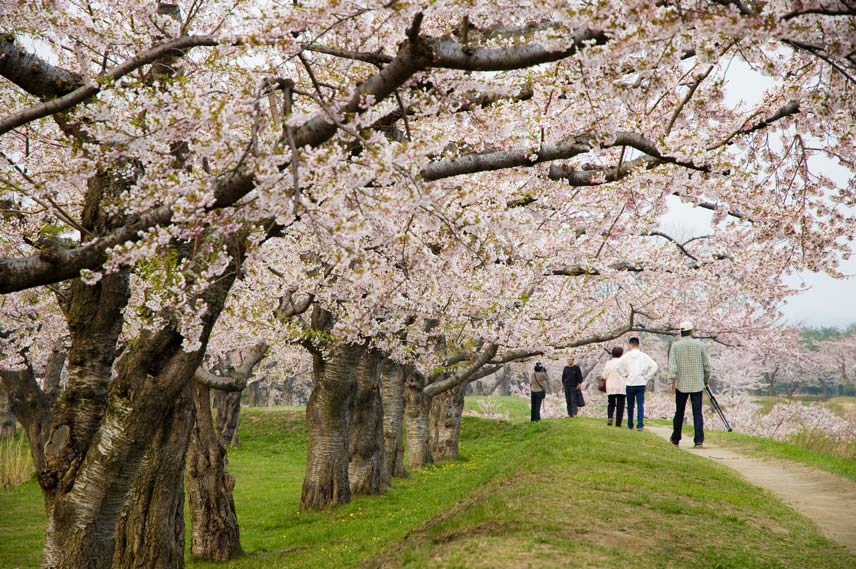Cherry blossoms to arrive early in a warmer future
For many people in Japan, the mere mention of cherry blossoms conjures happy images of school and university entrance ceremonies, and bright-eyed new recruits at company orientations.
The majestic yet delicate flower explodes into blossom for a few shorts weeks in late March or early April (except in the far northern or southern regions), during which time the entire country seems to be bathed in a soft pink glow. This coincides with the beginning of the academic and employment year, when many young people are embarking on new chapters in their lives. In many ways, Spring and the appearance of cherry blossoms represents new beginnings in Japan – a new start symbolised by the fresh pink blossom.
But all that may change with expected temperature increases due to climate change. That’s according to a paper soon to be published in the academic journal Global Change Biology, which predicts that cherry blossoms will bloom an average of around one month earlier by 2100.
Researchers from Japan and the USA developed a new model to predict blooming times, based on 29 years of blooming and climate data collected from 1981 to 2000 at the Tama Forest Cherry Preservation Garden in Tokyo.
The new model uses a statistical method called a Bayesian survival model, which is more commonly used to predict the effect of medical treatments on patient survival. Along with estimates of warming, the researchers also included estimates of chilling periods in their model, since blooming depends not only on the warming spring weather but also on the cool weather that preceded it.
The resulting model was more sensitive than previous models and fit well with the recorded data from 1981 to 2000. Then, by applying the model to future estimates of warmer temperatures under climate change, researchers could predict that the four varieties of cherry blossom included in the study would bloom an average of 30 to 31 days earlier during the period 2081 to 2100. They also predict that there will be more variation in the timing of blooming from year to year.
The researchers point out that in this study, future temperature estimates still provide the required amount of chilling during cooler months for cherry blossoms to bloom. In other areas however, if chilling is not sufficient, or delayed, cherry blossoms may bloom later or more erratically than they currently do.
Earlier blooming of cherry blossoms in recent years has been reported before, but this study improves understanding of how blooming will be affected under climate change in the future. Researchers hope that this information will help managers plan for impacts on economically and culturally important events based around cherry blossoms. They also argue that better understanding of other ecologically and agriculturally important species is required for future management.
While the dates of some festivals and cultural events in Japan may be shifted to coincide with blooming times, it seems that in a climate change future, the cherry blossom backdrop to entrance ceremonies and new beginnings may just be a thing of folklore.
Further reading:
Modeling daily flowering probabilities: expected impact of climate change on Japanese cherry phenology.?Global change biology.








Let me tell You a sad story ! There are no comments yet, but You can be first one to comment this article.
Write a comment